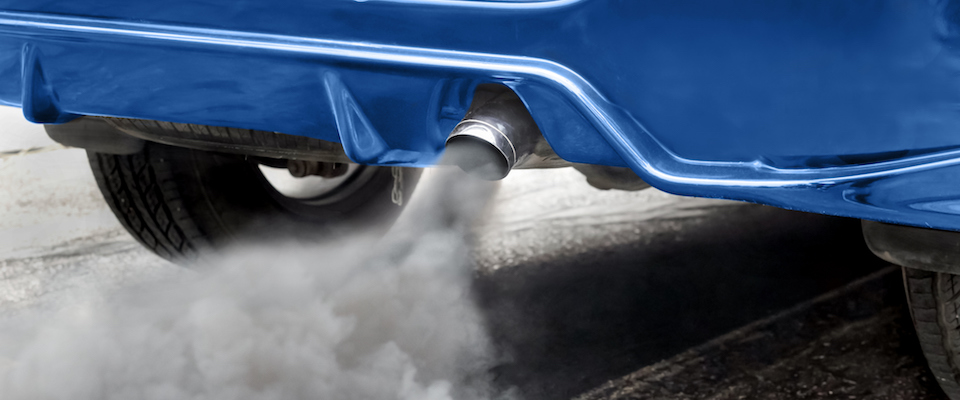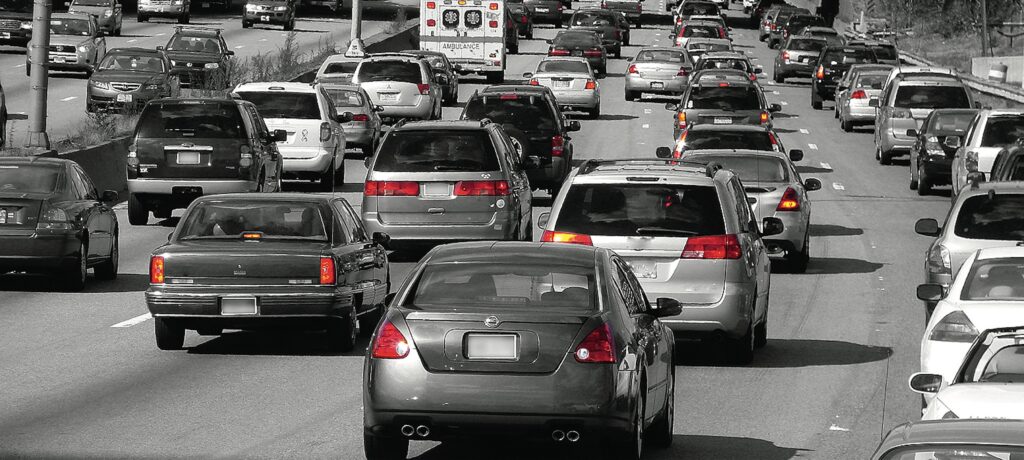The U.S. Environmental Protection Agency has decreed a roll-back of fuel economy and greenhouse gas emission standards for automobiles, benefitting automakers and oil companies while predictably enraging environmentalists. In making the announcement, EPA administrator Scott Pruitt declared the CAFE (for Corporate Average Fuel Economy) standards set by the Obama administration were too high and “didn’t comport with reality.”
The agency is also re-considering a long-standing federal waiver that allowed California and 12 other states to enforce emissions and economy standards that are far tougher than the fed rules, setting up a potential showdown; California seems especially ready to rumble, with officials vowing to keep the state’s stringent rules intact, no matter what the Trump administration decides.
Off the top, the move reflects three pertinent characteristics of the Trump administration: a determination to undermine or negate any policy initiated by Barack Obama, a free-floating hostility to environmental regulation, and an animus for California generally and Governor Jerry Brown specifically. Neither Pruitt nor Trump has specified the degree of the rollback. The existing standards, announced in 2012, require car manufacturers to boost the fuel economy of cars and trucks to 54.5 miles per gallon by 2025, or roughly double today’s MPGs. This would slash the petroleum consumption of all cars covered by the rule by 12 billion barrels over their lifetimes and cut carbon dioxide emissions by six billion tons.
As for states and environmental organizations successfully resisting any new federal rules, Sallee, says, the advantage could well rest with Pruitt.
That’s a lot of oil and planet warming carbon no matter how you cut it—or don’t cut it in this case—but as noted, it’s too early to say if the rollback will freeze standards at levels dictated for 2021 or 2022, maintain them at current levels, or even reach back to earlier benchmarks. It’s highly unlikely, of course, that they’ll be jettisoned altogether, which would allow nostalgic motorheads to rush out and buy lots of massive muscle cars that get eight miles to the gallon and spew intoxicating clouds of blue smoke. But then again, who knows? Trump thrives on disruption and chaos, and the only thing that seems certain is uncertainty.
James Sallee, a Berkeley assistant professor of agricultural and resource economics who researches energy pricing and fuel economy standards, notes that the EPA has only been involved with CAFE standards since 2012, when the Obama rules conjoined greenhouse gas emissions with fuel economy, leading to a “harmonization” with the California rules through 2025. Prior to that—all the way back to 1975, in fact—the implementation of fuel economy standards were wholly within the purview of the National Highway Traffic and Safety Administration. As for states and environmental organizations successfully resisting any new federal rules, Sallee, says, the advantage could well rest with Pruitt.
“The administration has a fair degree of discretion when it comes to determining standards, whether it’s freezing them or clawing them back,” Sallee says. “California has long had a waiver from the federal government to establish its tougher rules, and 12 states have adopted California’s standards. But there are no explicit protections for that waiver, and it’s untested [in the courts] whether it can be sustained in face of federal opposition.”
If California fights as expected, fuel economy rules could bifurcate once again, at least for the short term: one stringent policy would serve California and like-minded states and the federal standard would cover all others. Pruitt has opined that he doesn’t see why California gets to implement a set of fuel economy rules separate from the federal rules, but would he haul Jerry Brown into court?
“Pruitt’s strategy has largely been to avoid legal battles,” Sallee says. “He typically prefers to dial down enforcement. So his strategic choice in this case will be interesting. Will he confront California directly, or will he favor a more passive approach? I tend to think it will be the second course.”
The tiff between California and the feds has led to hand wringing among some economic and media analysts about the crushing burden two sets of rules would have on automakers. Sallee doesn’t share that angst. There’d be some administrative hassles, he says, but he doesn’t think it’d amount to an insurmountable encumbrance.
“Greater fuel economy essentially lowers the price of driving, and that exacerbates externalities such as fatal accidents and congestion – you get more of both.”
“The standards wouldn’t make it illegal to sell a certain type of vehicle, a muscle car or whatever,” Sallee says. “The rules just require the fleet to meet a specific standard. So California’s attempts to reduce pollution could be offset by automakers selling muscle cars somewhere else. In fact, if California attempts to reduce greenhouse gas emissions with its own standards, and that encourages the sale of lots of hybrids and electric vehicles, those cars would count toward the federal standard as well. So automakers actually could sell lots of gas guzzlers and still conform to the federal rules.”
But it’s not as though existing fuel economy standards in any form are an ideal approach to reducing petroleum consumption and emissions, says Sallee. In fact, they’re unwieldy and inefficient. It’d be far simpler and more effective to reduce fuel consumption and emissions by taxing carbon and gasoline directly.
“There are a lot of unintended consequences to changing fuel economy standards without changing the price of fuel,” says Sallee. “[Greater fuel economy] essentially lowers the price of driving, and that exacerbates externalities such as fatal accidents and congestion – you get more of both, because people are driving more.”
And increased driving ultimately means more cars on the road, which can translate as reduced net emissions benefits: sure, each car is spewing fewer oxides and CO2, but more cars reduce your emissions benefits – plus, you have hellish traffic.
“The idea should be to reduce the numbers of cars on the road, and you don’t get that by tweaking fuel economy standards,” says Sallee. “[Increased carbon and fuel taxes] would do a better job of reducing greenhouse gas emissions while also reducing traffic fatalities and congestion, but unhappily, those possibilities aren’t on the table.”
Further, says, Sallee, fuel standards are incidental to two major trends likely to transform the transportation sector: electrification and ridesharing.
“A lot of countries want to electrify their fleets, and some are moving that way already,” says Sallee, “and it’s likely we’re going to see an increasing shift toward electrification in the U.S. over the next decade or two. So we want policies that are forward-looking, provide market clarity, indicate where research and development should go, and help bring consumers along. We have to figure out charging and EV infrastructure, and ridesharing networks and new car ownership models. And we have to determine the emissions element with ridesharing—it could mean fewer cars in the fleet, but maybe the cars will be on the road more. Ridesharing could well be cheaper than car ownership, but when a service becomes cheaper it typically grows and grows. So what will that mean?”
That, of course, will all be determined over the next decade or two. Or three. But getting back to the near future: When can we expect new fuel economy guidelines?
Don’t hold your breath, advises Sallee.
“There’s no reason to think the administration will come up with anything new,” Sallee says. “I don’t anticipate actual replacement. Just a weakening of the current standards.”





















